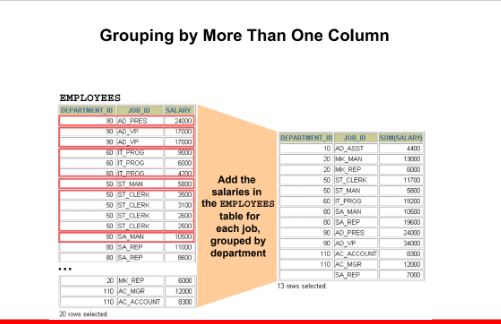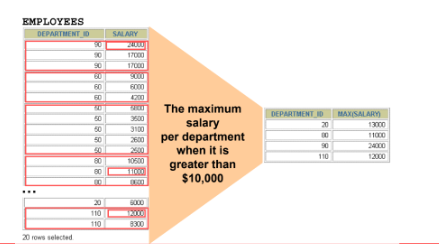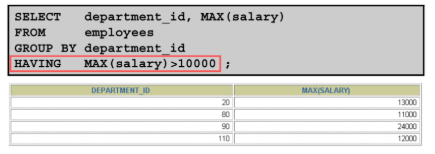Module3 - Info Management
1/28
Earn XP
Description and Tags
oakyu
Name | Mastery | Learn | Test | Matching | Spaced |
|---|
No study sessions yet.
29 Terms
Group Functions
Operate on sets of rows to give one result per group
AVG and SUM
Used for numeric datas
AVG
COUNT
MAX
MIN
STDDEV
SUM
VARIANCE
Types of group functions
MIN and MAX
Use for numeric, char, and date data types
Count (*)
This return the number of rows in a table
COUNT (EXPR)
Returns the number of rows w non values fo
COOUT (DISTINCT expr)
Returns the number of distinct non-values of the expression
Group functions
This ignores null values in a column
NVL Function
This forces group functions to include null values
GROUP BY
Used to divide rows in a table into smaller groups
True
True or False:
All columns in the SELECT list that are not in a group functions must be in the GROUP BY clause.
SELECT
All columns in the ____ list that are not in a group functions must be in the GROUP BY clause.
TRUE
True or False:
The GROUP BY column does not have to be in the SELECT list
SELECT
The GROUP BY column does not have to be in the ______ list
Grouping by more than one column

Using the GROUP BY clause on multiple columns

True
True or false:
Any column or expression in the SELECT list that is not an aggregate function must be in the GROUP BY clause
SELECT
Any column or expression in the _____ list that is not an aggregate function must be in the GROUP BY clause
GROUP BY
Any column or expression in the SELECT list that is not an aggregate function must be in the ____ clause
True
True or False
You cannot use the WHERE clause to restrict groups.
WHERE
You cannot use the ___ clause to restrict groups.
True
True or False:
You cannot use group functions in the WHERE clause.
WHERE
You cannot use group functions in the ____ clause.
RESRICTING GROUP RESULTS

Rows are grouped
GROUP function is applied
GROUPS matching the HAVING clause are displayed
When using the HAVING clause it restricts?
When using the HAVING clause

ROLLUP
creates subtotals that roll up from the most
detailed
level to a grand total, using the grouping list
specified in the GROUP BY clause.
CUBE
is often used in queries that use columns from separate tables rather than separate columns from a single table.
Check how cube works
